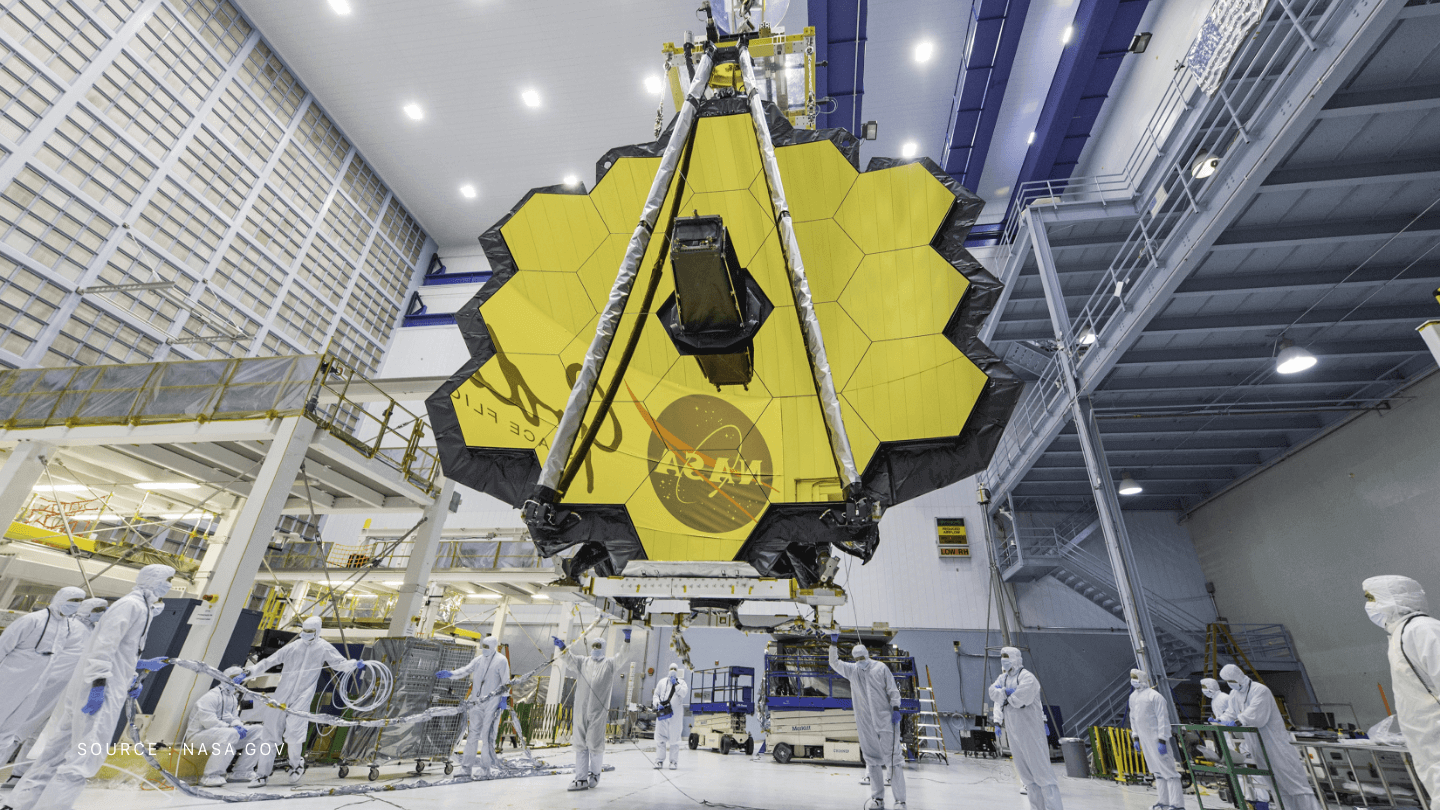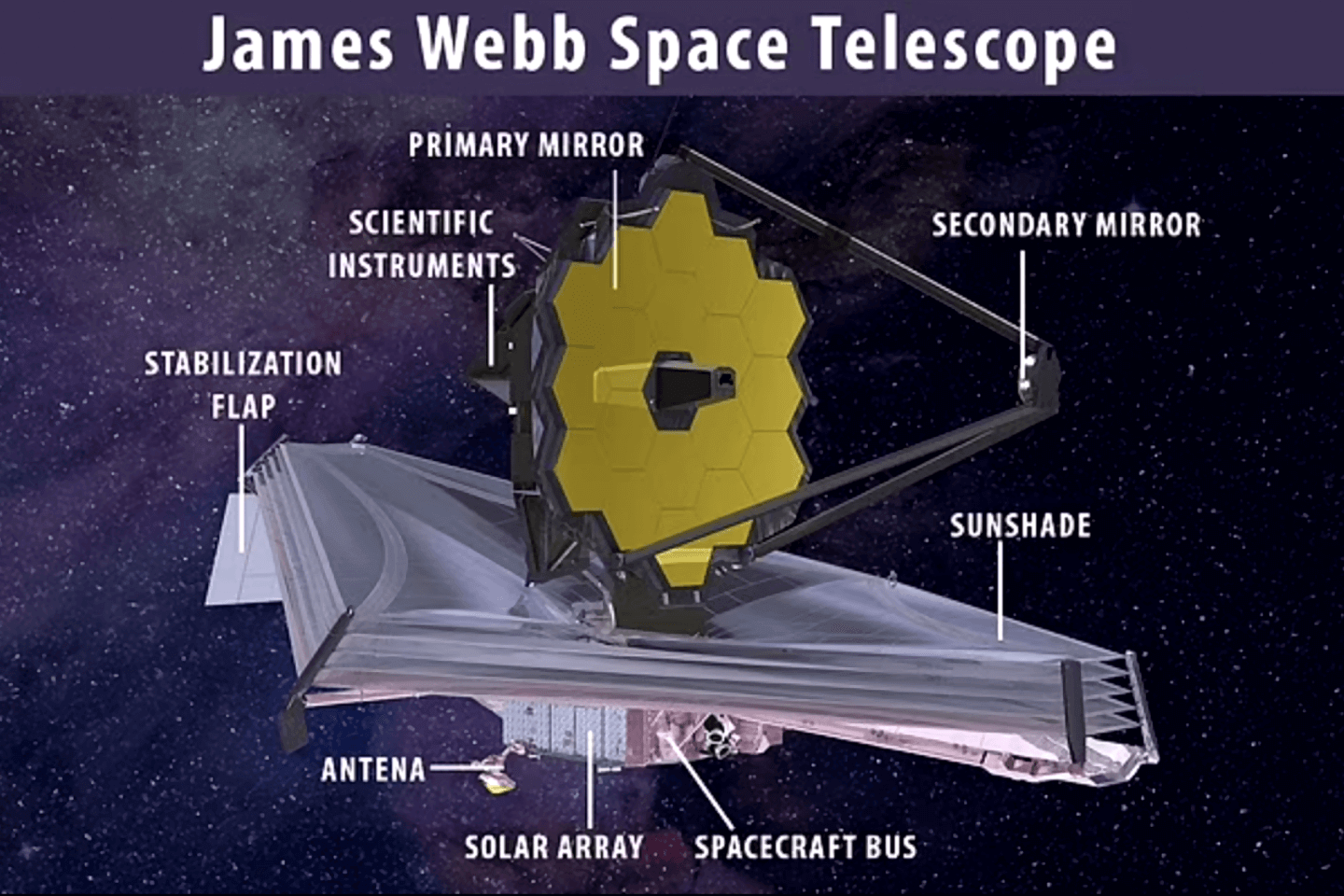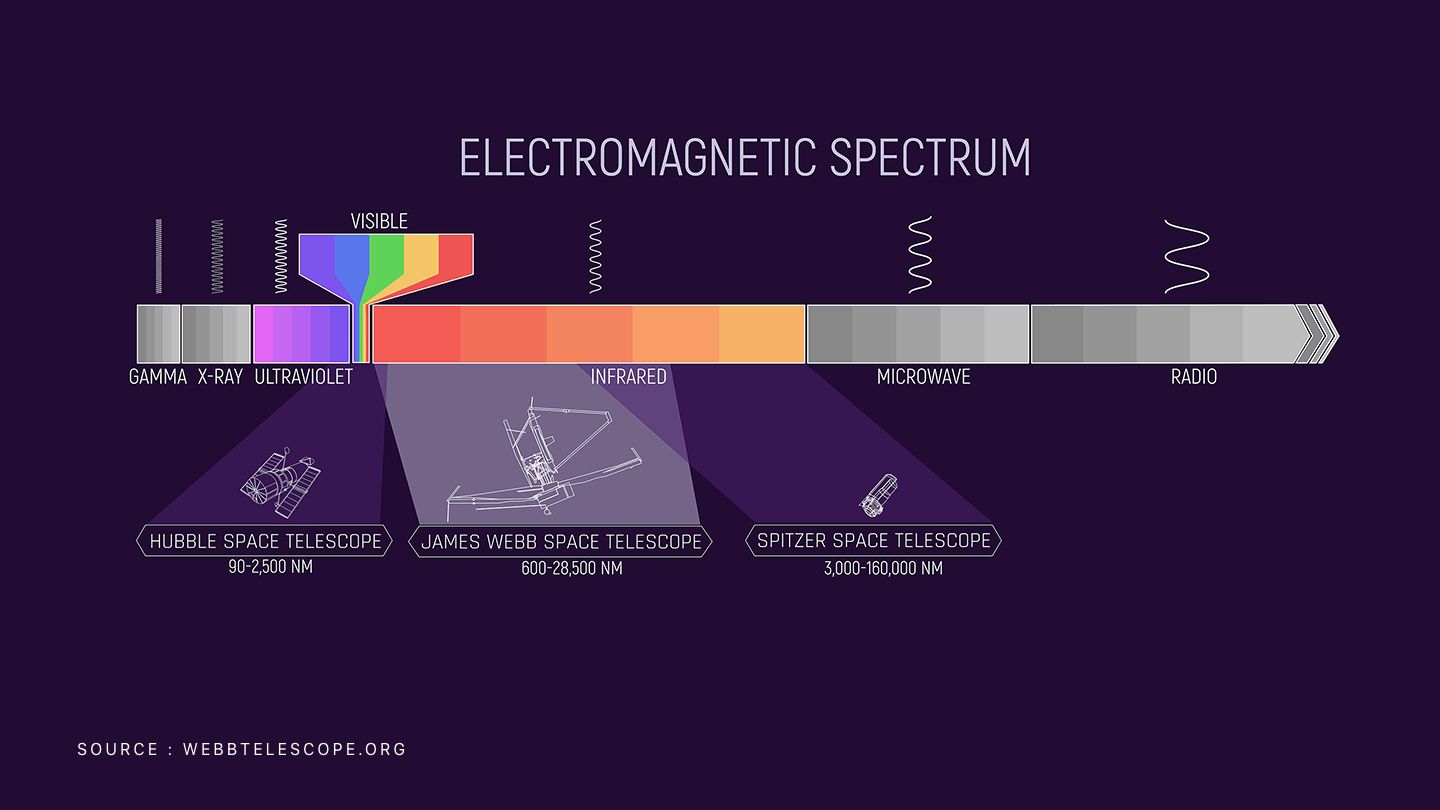
When James Webb Telescope, the world’s biggest, most sensitive telescope was launched on December 25th, 2021, on an Ariane 5 rocket from Kourou, French Guiana, it was hailed as a time machine!
The reason being, James Webb Telescope will show us things and entities that have never been witnessed before, via any telescope. The James Webb Telescope allows us to view the Universe at infrared wavelengths, which changes everything.
Such is the impact and power of infrared wavelengths that we can now view the first stars and first Galaxies which formed after the Big Bang (13.8 billion years ago)
After its launch, this massive telescope was placed at the Sun-Earth L2 Lagrange point (around 1 million miles away from Earth’s atmosphere), and on July 11, 2022, the first images have already been released, which astonished the scientific community.
(Webb’s First Deep Field: 1st image from James Webb Telescope) Source: Wikipedia
Weighing 6,161.4 kg, with a power of 2 kW, this telescope has been deployed in solar orbit near the Sun-Earth L2 Lagrange point, which is around 1.5 million kilometers from Earth.
After the launch, this telescope is now orbiting the Sun, staying just behind Earth, so that it stays within the right temperature range (50 K (−223 °C, −370 °F)) and infra-red spectrum for optimal results.
James Webb Telescope has now replaced Hubble Space Telescope as the flagship space-based observatory.
In this blog, we will discuss the role of software in the working of the James Webb Telescope, and find out how we can download its data, and analyze the data using Python language.
The Role Of Software In The Working Of the James Webb Telescope
James Webb Telescope will be operated, controlled, and maneuvered with software, just like any smartphone or laptop.
18-piece mirror on James Webb Telescope, which enables it to pick up far infrared light from distant galaxies (Image credit: NASA/Desiree Stover)
But unlike simple, basic software for smartphones/laptops, the James Webb Telescope will be powered with complex software, made by IBM.
In 2007, it was announced that NASA will be using the Rational Rose RealTime tool, a highly competent software developed by IBM for handling time-critical events, with reactive systems.
The application for James Webb Telescope has been developed on the Rational Rose RealTime platform, using the C++ language, and more than 200,000 lines of code.
As per IBM researchers, this software forms the foundation of this world’s biggest telescope, based on which it will operate and try to discover the hidden entities of space, never seen or experienced before.
Basically, the Rational Rose RealTime tool leverages the Unified Modeling Language (UML) 2.0 specifications, and using this, it can visualize and create systems for ‘real-time domains’.
Rational Rose Realtime Tool can be described as a UML-based visual modeling development software, which makes it extremely easy for software developers to code, via a simple drag-and-drop feature.
NASA is also deploying IBM’s ClearCase and ClearQuest tools for the telescope.
Interestingly, IBM’s Rational Rose RealTime platform is based on open-source software, and this helped them to create this complex application faster, and reduce the risks occurring from bugs and other factors.
How does Will Rational Rose RealTime Tool operate?
IBM’s Rational Rose RealTime Tool is the foundation, based on which the entire James Webb Telescope will operate.
Basically, this software will operate:
- Guidance
- Navigation, and Control (GNC) systems,
- Command and Data Handling (CNDH)
- Integrated Science Instrument Module (ISIM)
Out of these, Integrated Science Instrument Module or ISIM is the most critical component, which houses 4 major instruments which operate the James Webb Telescope, and makes it operate.
Hence, software with a common platform was needed, which can seamlessly control and guide the telescope, via one single command control.
Another interesting fact: Rational Rose RealTime Tool tests the quality of coding and development in real-time, which includes code generation, testing, and debugging, all in real-time.
This way, the development work will not hamper, and it will keep on streamlining the software for optimal productivity.
This is the reason NASA will continue to use the Rational Rose RealTime Tool for the multi-decade project of the James Webb Telescope because it has developed a standard architecture, wherein the reusable portions for the next missions, without spending much time on the development part.
Python: Most Widely Used Programming Language In Astronomy
Space explorations have always been about data: analyzing data and then using the insights to decode the secrets of the Universe has been the objective.
Source: NASA
Interestingly, Python language has proven to be a solid resource, when it comes to analyzing the massive data generated by the James Webb Telescope.
Traditionally, Python has been the most widely used programming language for analyzing and understanding space exploration data, for decades.
And with James Webb Telescope, this is no different.
As per Nitya Mandyam, a Ph.D. in Astrophysics and a Senior Curriculum Developer at Codecademy, Python is the most favorite and widely used programming language in the field of astronomy, because it’s the “language of data analysis, data manipulation, and data inference,”
As the James Webb telescope is orbiting 1 million miles away, software engineers at NASA are using Python to “receive, organize, and file” data, which is continuously beamed back to the Earth.
The data from the James Webb Telescope is collected by NASA’s Deep Space Network, and then it’s sent to Space Telescope Science Institute’s processing systems, and then processed and analyzed. Python is the programming language that makes it possible.
How To Download Data From James Webb Telescope & Analyze Using Python?
Anyone can become a ‘Citizen Scientist’, and analyze the data which James Webb Telescope sends back to Earth, and then explore the Universe from their own angle.
This is how it can be done:
- Visit this Github repository, where there are numerous Python libraries, which can be used to access the data at the Space Telescope Science Institute’s servers.
- The Space Telescope Science Institute has published a detailed guide and documentation, which explains how to access this data, and how to analyze it via Python libraries.
- Some other interesting tools and applications that can be used to study and derive conclusions: Galaxy Zoo, using which any user can classify the galaxies based on their shapes, and Astropy, which is a highly specialized Python package, used to analyze the Astro-data.
- Special mention of Jupyter Books, a super useful platform to write and iterate on your Python data, without any hassles.
Some basic skills which are required to understand, and analyze the data coming in from James Webb and other telescopes are:
- Python 3
- SQL
- Visualization of data using Python
- Deep Learning Models
- Machine Learning
- Big Data and Data Analytics
If you have any project (including space exploration and deep space) which needs expert Python programmers, who can visualize the data and derive insights and intelligence, then we can help you right away.
Connect with our team, and hire Python developers for your projects, and ensure stunning results.
Follow us on Linkedin to keep track of our deeply-researched blogs on the topics of tech and science.







